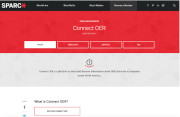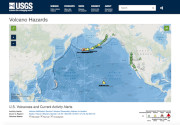You may be familiar with ephemeral content for social media – fleeting content such as promotions for upcoming events that are only relevant and accessible for a limited time. We covered this content in the May 2019 ATE Central Connection Success Tips. These posts can be fun for audiences and boost social media engagement, but there may be times when you need to post but do not have upcoming ephemeral content to share.
This is when evergreen content can be a lifesaver. As this overview from Digital Marketing Institute explains, Evergreen content remains relevant to readers long after it was created and can be shared on social media multiple times before becoming stale. Having such material at the ready can boost your social media traffic, keep you connected to key audiences even when you do not have events or other time-sensitive materials to post, and help to develop a reputation for expertise in your ATE topic area.
It is fairly straightforward to create evergreen content that you can integrate into your project or center’s social media strategy. Examples of evergreen content include how-to articles or videos, blog posts offering advice or tips, case studies, resource lists or databases, and publications and reviews, among others. What is not evergreen? News items, reports featuring data that will quickly go out of date, and articles on recent industry trends are just a few examples.
Here are a few tips to help you use evergreen content more effectively:
- Don’t overuse it. Audiences interacting with your social media will quickly tire of seeing posts promoting the same blog or report week after week. Having a variety of content and deploying it sparingly will ensure it stays compelling.
- Before posting, make sure the content is still relevant to your audience. Has the information gone out-of-date? Are there standards for tone, jargon, or style that have changed? Could the content just use some “freshening up”?
- Write your outreach materials with sustainability in mind. When you create a blog post or develop new resources to share, consider how durable it will be. Thinking about the long-term at the moment of creating new content can save you time down the road.
For an example of evergreen content, take a look at this post from ATE Central Twitter. ATE Central offers good examples of how to use evergreen content on social media within the scope of STEM and ATE. For more ideas on how to market your project or center with social media, check out the ATE Central Outreach Kit.








